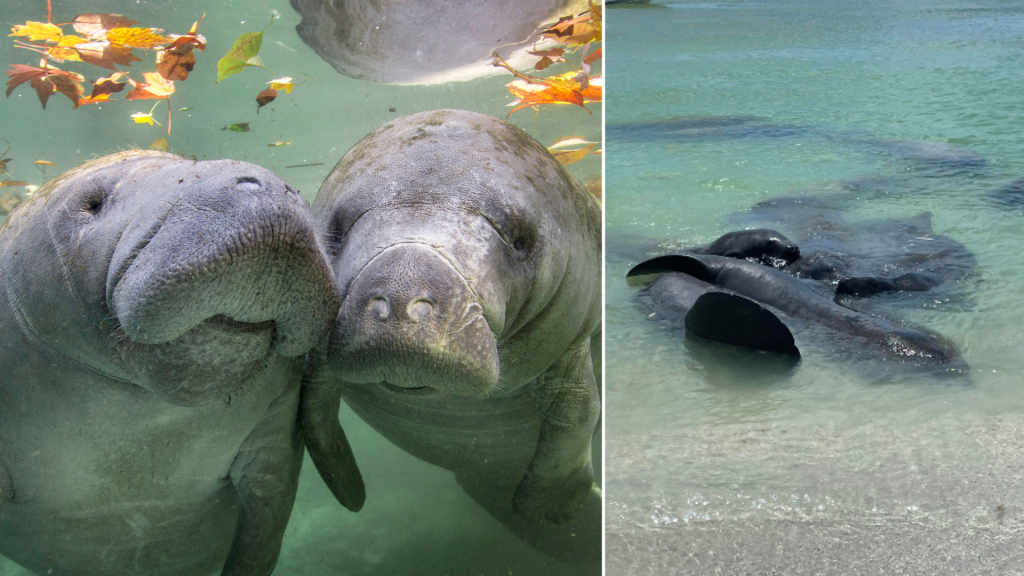- Officials in Florida are asking the public to stop disrupting mating manatees.
- The beloved Florida species mates in a herd of one female and many males, sometimes near the shore.
- A record number of manatees died in 2021, prompting conservation groups to sue the EPA.
Officials in Florida issued a straightforward request to members of the public this week: Stop touching manatees when the animals are having sex.
The Sarasota Police Department made the announcement on Sunday in conjunction with the Mote Marine Laboratory and Aquarium after a group of mating manatees were spotted near South Lido Beach and "folks were trying to touch them."
"If you see a manatee mating herd, observe respectfully from a distance. Do NOT touch," the SPD said in a tweet that was also shared by the marine lab. "If you see a distressed/deceased manatee, call Mote's hotline 888-345-2335."
The tweet included photos that showed several manatees cuddled up near the shoreline in shallow water right along the beach.
—Sarasota Police Department (@SarasotaPD) August 7, 2022
Manatees, sometimes called sea cows, are large, marine mammals and iconic Florida species. During mating, manatees will huddle together in a large group, with the mating herd consisting of a single female surrounded by a dozen or more males, drawn to her by her pheromones.
The males will take turns mating with the female, for whom mating season, which can last from March to November, can be exhausting. Kane Rigney, a manatee biologist for the state of Florida, told the Tampa Bay Times mating herds sometimes get close to shore because the females try to beach themselves in order to get away from the males.
Florida manatees are protected under both federal and state law, but recent mortality events have sparked concern for the species. There are an estimated 7,520 manatees in Florida today, up from only hundreds in the 1970s.
But in 2021, 1,101 manatees died in Florida, according to the Florida Fish and Wildlife Conservation Commission. It was the largest manatee die-off ever recorded in the state, at nearly twice the five-year average. Federal and state wildlife officials have classified the deaths as an "unusual mortality event" that "demands immediate response."
Causes of death included collisions with boats or being drowned in flood gates and canal locks, but the most common factor killing the manatees was starvation.
Researchers have attributed the starvation to a lack of seagrass in the Indian River Lagoon, located north of Palm Beach on Florida's Atlantic coast. The lagoon serves as essential habitat for manatees year-round and especially in winter months.
"Environmental conditions in portions of the Indian River Lagoon remain a concern," according to the Florida Fish and Wildlife Conservation Commission, which added poor water quality in the lagoon has resulted in "harmful algal blooms and widespread seagrass loss."
Three conservation groups sued the Environmental Protection Agency in May, citing poor water quality as causing the manatee die-off. The lawsuit alleges that water quality standards are not being maintained and that the Indian River Lagoon is being polluted by wastewater treatment plants and fertilizer runoff, among other factors.
Organizations such as the Center for Biological Diversity, Defenders of Wildlife, and Save the Manatee are trying to require the EPA to work with the US Fish and Wildlife Service and the National Marine Fisheries Service to improve the water quality of the lagoon.
"Florida's beloved manatees will continue to suffer and die as long as EPA maintains inadequate water quality standards," Jane Davenport, an attorney at Defenders of Wildlife, said in a statement.

